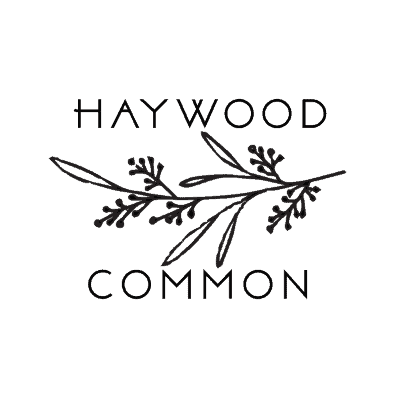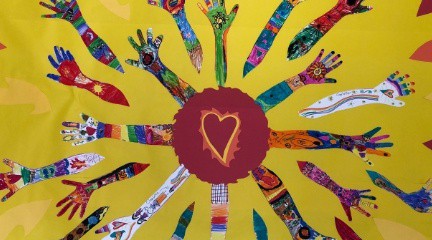
by West | Oct 23, 2018 | Blogs, Home Page News, Rainbow Institute
In 2012 Rainbow Community School (RCS) was selected as an Ashoka Changemaker School, a network of schools that empower students as changemakers by prioritizing empathy, leadership, and collaborative problem-solving as student outcomes. They recognize the capacities of young people to make a BIG difference and highlight empathy as the centerpiece for all changemaking efforts. RCS was nominated as a changemaker School because of its belief that educating for the wholechild directly impacts humanity’s collective awareness and capacity for growth.
The Journey from I to We:
Gandhi’s wise words remind us that it all begins with our inner selves: “Be the change that you wish to see in the world.” At RCS, we believe that real change originates out of an individuals’ commitment to their own evolution. As a result, we strive to support all learners in becoming whole, finding purpose and then making change. Our educational model nurtures the holistic development of the child and by doing so, these whole humans are better equipped and more empowered to serve the needs of humanity and the planet through their positive change making efforts.
It is not uncommon for our learners to acknowledge that before they can show up for others they must show up for themselves and it is the emphasis on self-discovery and personal well-being that opens the doors to connection, collaboration and thus meaningful work. Our students explore, at a very young age, what it means to “know thyself” by recognizing their unique gifts and exploring practices that highlight self-empathy and self-gratitude.
By inviting a child’s inner life into the classroom we are awakening their spirit. A spiritually nourished child is not only ready to learn but it’s the child’s strong spiritual identity that is the catalyst for meaningful work. The catalyst for change!
There are certain stand out elements of the Rainbow Seven Domains Learning Model that help to create favorable conditions for spiritual identity development and the daily centering practice is one of them. This morning ritual serves to awaken the spiritual center of each child, opening pathways to learning. As a centering begins, the classroom is filled with ritual and reverence. These rituals vary from classroom to classroom but the essence of centering is such that the students gather in a circle on a rug, the space is set with intention, the lights are dimmed, a chime or bell invites silence, reverence fills the room, a pause is taken for audible breath work, the invitation of fire through candlelight is summoned- this begins the sacred work of the day. The results are often a harmonious learning environment in which focused thinking come naturally, trust among the group yield effortless work and innovative solutions are manifested.
Recently I joined Lucy and the preschool Dragonflies for centering. The preschool centering ritual leader began by asking his class to put on their mindful bodies and their mindful listening ears. He then told them that he would ring the singing bowl and wanted every person to actively and mindfully listen until they could no longer hear the song of the bell and then to raise their hand when its song was gone. He then used a breathing ball and guided his classmates in three deep inhales and exhales. As the ball expanded he said aloud “inhale” and as it contracted he said “exhale.”
Lucy, then invited the preschoolers to join her in a self-affirming morning verse that was paired with sign language. The kids spoke the words with confidence and enthusiasm… “May I be healthy, may I be strong, may I be happy, may I be peaceful.” I was happy to witness the use of self-affirmations with such young learners. Positive affirmations or positive self-talk are great motivators for self-reflection and self-change. Statements such as these can easily become identity statements. Thus, benefiting not only oneself but those that you interact with.
Lucy deepened the experience by extending the lesson. She went on to explain that each person would have the opportunity to choose a kind wish they have for themselves. She showed and read the kind wish cards aloud and asked to kids to be thinking about which kind wish they wanted for themselves today. When the kids were ready to share, they signaled to Lucy by placing their thumbs on their knees.
She invited each them to approach the altar which was filled with the kind wish cards, candles and the wishing water. The kids were asked to speak their kind wish aloud and in the direction of the wishing water. It was obvious that Lucy had worked hard to create a supportive and safe yet vulnerable space for the Dragonflies as each child spoke, the rest of the group held a quiet space.
Finally, Lucy reminded the children that much like plants need our care to thrive, our intentions and affirmations need that attention too. As the centering practice came to a close, she explained, that she would take the wishing water (filled with their wishes) and send the kind wishes in to the world by watering the plants and that the plant’s health and growth will be a visual reminder of our own personal growth.
If we feed our body, it can grow. If we feed our mind, it can be stimulated. If we nurture our spirit, it can flourish. What daily affirmations will help you flourish?
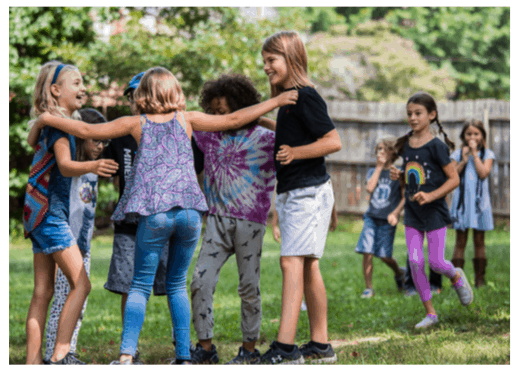
by West | Oct 23, 2018 | Blogs, Home Page News, Rainbow Institute
Connection and community at Rainbow is often nurtured through rituals, traditions or celebrations that mark the passage of time. We begin the school year with an opening ceremony during which the entire school comes together to offer blessings and intentions for the coming year. On that same day we also host a Rose Ceremony. This ceremony happens twice each year; on the first day of school and on the last day of school.
The ceremony on the 1st day of school is designed for the oldest students (8th graders) in the school to welcome the 1st graders into elementary school. Each 8th grader gives a 1st grader a rose to symbolize their support as they transition. This important rite of passage is replicated on the last day of school as the 8th graders graduate. The 1st graders offer them a rose to mark their transition.
Also during the first week of school, each class chooses a mascot. Choosing a class mascot has been a community building tradition at Rainbow for years. This tradition yields many benefits. Students are using the mental domain to formulate logical arguments about their mascot choice, the social domain to share their ideas and participate in a democratic voting process, the spiritual domain by learning about symbolism of the mascot and/or striving to embody the qualities of those animals. The mascot provides the class a shared identity and deepens group cohesion.
We also gather for a weekly song circle. This is a simple and joyful way to engage in the universal language of music while also offering a special bonding experience across the age groups.
Additionally, throughout the course of the year, we hold fire circles that help us honor the seasonal cycles and our own inner cycles. The circles foster a support system for deep reflection, invite gratitude and, nurture the well being of all community members who attend. As we gear up for the Fall equinox, a fire burns on campus, extending the invitation to sit, to breathe and to connect.
These are a few of the community connection opportunities offered in the first few weeks of school. We invite you to find ways that integrate modified rituals such as these in your home, classroom or organization.

by West | Jul 16, 2018 | News
Freedom and Creativity
Summer is a time when folks often invite freedom and creativity back into their busy lives. Maybe they pick up a project that has taken a back seat, take a workshop, or reconnect with a lost skill, art or craft. Maybe they learn, read, or try something new. Summer is a great time to nurture the young inventor in each child.
The long days of the season allow more time to drop into open-ended, free and constructivist play. Making time for STEM concepts, for inventing and engineering can tap into imaginations, foster creativity and enhance problem-solving capacities. You can try offering this space to them by spending some time exploring, asking questions, creating and building. Allow for simple invention and engineering projects by providing tools and materials such as items found in a junk drawer, recyclables, or simple office supplies.
Once you have ignited their passion for inventing, try stretching their thinking with various books.
What do you do with an Idea? By Kobi Yamada
This is a great book a child’s brilliant idea to bring it to the world. After reading, you can begin by asking what an animal needs to survive. Then you might ask what more the animals need to grow and thrive. Continue the discussion by likening animal growth to “idea growth.” State that our ideas can grow, thrive, survive, and evolve by nurturing them. Follow up with a discussion about the author’s message: stick with your idea, follow it through, persevere and your idea could change the world.
Not a Box
Next time you read with your child, you can try reading Not a Box by Antoinette Portis. This is a fabulous book about a rabbit with a very BIG imagination. After completing the book, you can discuss with your child how imagination and creativity are magical elements of who they are. Talking about different perspectives allows children to see that showing and sharing are part of what makes them unique and special.
Next, lay out a box of recyclables or knickknacks and let your child choose one or more items to repurpose. Ask your child to reimagine how this ordinary object can become extraordinary. Encourage them to use their artistic skills to reimagine it by creating something new. You may also want to extend their learning by inviting them to use the materials and resources to create a 3-D representation of their new invention. Once they have finished, it’s always quite powerful to spend time reflecting about it together.
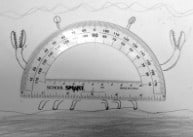
Implications of Your Work
Children appreciate “thinking outside of the box.” They thrive off of creation and love to deep dive into their own imaginations. They approach STEM activities, such as this one, in the most authentic way when they know that their learning environment is supportive and safe. Children are most creative when the learning environment highlights many perspectives, emphasizes process over product, and failure as opportunity.
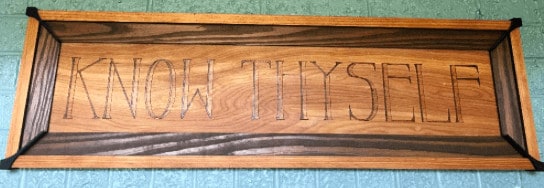
by West | Jun 19, 2018 | News
Rites of passage are important, sacred ceremonies that highlight a transitional period in a person’s life.
In many cultures, tribes and soceities around the world, children engage in various rites of passage. Often these are times when a child is recognized for passing though the threshold toward adulthood. Graduation at Rainbow Community School serves as an integral rite of passage for our graduating Omega Middle Schoolers.
Preparation for this rite officially begins as they join the Omega program. Subtle and more obvious practices support each Omegan’s readiness. For example, each day that middle schoolers pass through a physical threshold. As enter the building, they pass under a wooden panel inscribed with “Know Thyself.” Additionally, their arrival is also marked with a sacred time called Centering; this time is used for grounding, centering, pondering life’s big questions. Lessons, activities and learning experiences throughout the day not only foster a culture of connectedness but support the work of nurturing the child to individuate- to
Know Thyself.
These opportunities, although grounded in the safety of community, encourage personal identity development, person spirituality and ultimately- wholeness. According to decades of research by Dr. Lisa Miller, head of clinical psychology at Columbia’s Teachers College, teens who have the benefit of developing a personal spirituality are 80% less likely to suffer from ongoing and recurring depression and 60% less likely to become substance abusers. To that end, it is reasonable to suggest that spirituality is indeed the cornerstone for mental health and human well-being. Intentional rites of passage are but one way to nourish that health.
To KNOW THYSELF is to answer these questions:
Who am I?
Who are you?
Why am I here?
What is my purpose?
Graduating Omegans write commencement speeches that reflect on their time at Rainbow and acknowledge their gratitude, growth, challenges, hopes and dreams. Each student, as part of the rite, share these speeches publicly. This public sharing is an amazingly brave yet vulnerable challenge.
But more importantly, the words of wisdom spoken by these young adults are nothing less than profound.
They are informed by years of social, emotional and spiritual engagement and learning. They are guided by opportunities to explore life’s big mysteries and ponder personal purpose. They are rooted in a a collective AND personal identity.
If you are curious what happens when soul is invited into the classroom, please click here to listen to Noah Mraz’s graduation speech.
Please also consider:
- What are the implications of integrating rites of passage, existential questioning and the spiritual domain into your own work with children?
- What are you already doing that serves the spiritual development of your students? What more can you do?

by West | May 19, 2018 | Blogs, Home Page News, Rainbow Institute
The integrated RCS curriculum fosters learning in a holistic way.
This approach is void of the restrictions often imposed by teaching discreet subjects. Purposeful integration acknowledges, builds on and reinforces the existing relationships between subject areas and/or topics. The hope is that learning is then more easily transferred into other settings.
Integration is also a “brain compatible strategy” as described by brain researcher, Eric Jenson. Jenson (1996) suggests that, “The brain learns best in real-life, immersion-style, multi-path learning [and] fragmented, piecemeal presenting can forever kill the joy and love of learning.” This immersion style is considered a best practice and is embraced by our teachers. It is, therefore, not uncommon for the theme, topic or unit of study to be woven into the fabric of an entire school day, week, and/or month. For example, the element of water and its states of matter are introduced in kindergarten. First grade elaborates on the water cycle and studies rivers and oceans. During these units, water often becomes a central theme that invites cross curricular learning.
Centering offers cross curricular learning opportunities.
The intended purpose of centering is to awaken the spiritual center of each child, opening pathways to learning. The centering practice activity includes a contemplative experience, but teachers also strive to extend the learning by integrating with the academic curriculum. The Mind Jar centering serves as an excellent example. The Mind Jar begins with a conversation about the various properties of water. Perhaps prompted by photographs of water in various forms or by a book such as, The Water Dance by Thomas Locker. Discussion yields a shared understanding of the ways in which water moves- Water is always moving, flowing, changing, essential to life, found deep in the ocean, under the ground, high in the sky, freezing, melting, etc. The focus being more heavily on the magical and mysterious qualities of the element rather than the scientific descriptions.
The teacher guides students to make connections between their own thoughts and feelings to the movements of water in the natural world
(i.e. a raging river can represent anger, a waterfall- excitement, snowfall- peace) After giving an example or two, the children are then prompted to suggest additional feelings and water movements connections. The teacher explains that The Mind Jar is simply a jar filled with water and glitter. But it is representative a tiny world where we can watch the movements of water and match those movements to our own feelings. The water represents our mind’s natural state and the glitter represents our thoughts, emotions, fears, concerns, and wonderings. When the jar is shaken, our thoughts will whirl around and our mind becomes cloudy and hard to see through. But, as the glitter begins to settle and still, so do our thoughts and feelings. It is in this stillness and calm state that we are able to make good decisions.
The Mind Jar is a simple mason jar containing water, glitter, glitter glue, and food coloring.
Combine warm water with the glitter glue, glitter, and food coloring. Close the Jar tightly. Depending on the amount of glue you use, the glitter will settle more slowly. This tool can be used when a child is feeling stressed, overwhelmed or upset. It can calm and relax them. It can serve as a meditation tool or a self-regulation tool. You can explore many versions of this on the web. If you have an interest in extending the learning from this centering, you may want to try a follow up centering using the picture book, Moody Cow Meditates. Peter the cow is moody after having a rough day. A series of unfortunate circumstances leads Peter’s grandfather to teach him how to settle his mind and let go of his frustration using some mediation tools.











